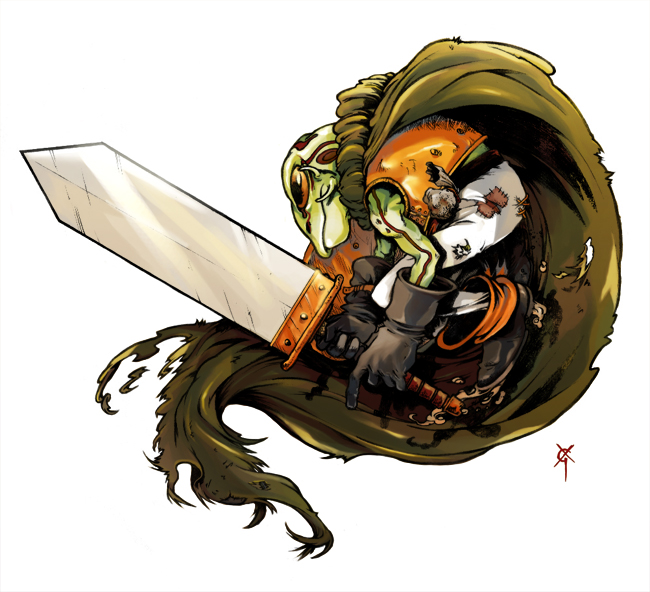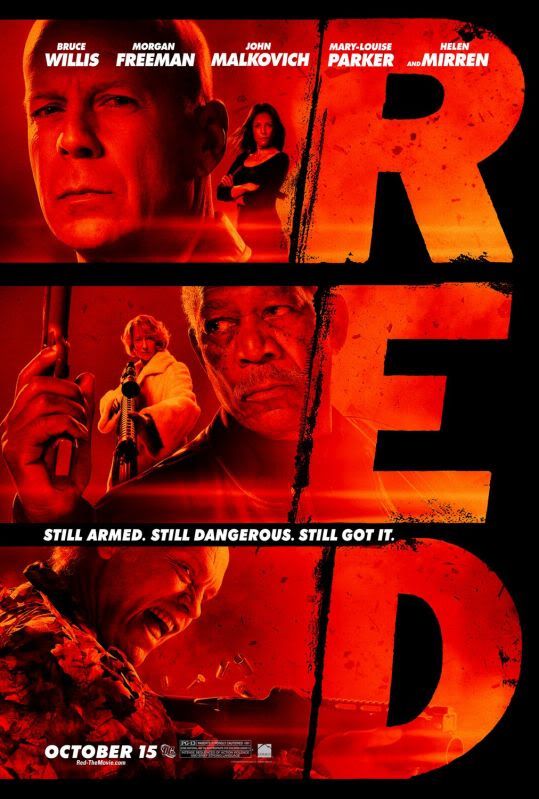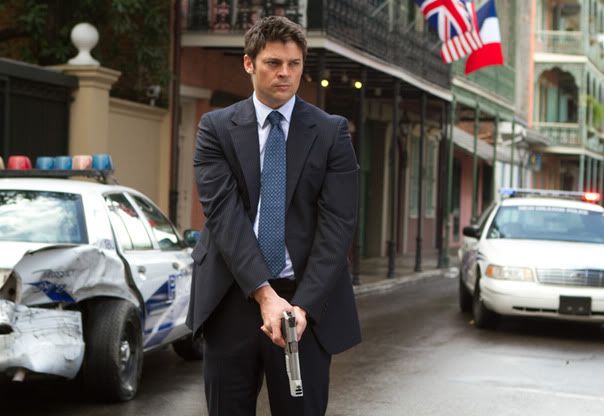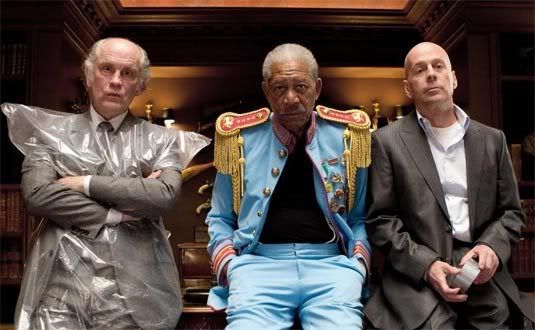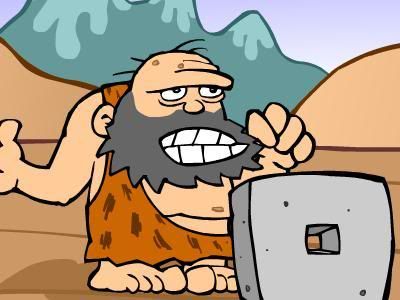
[audio:http://www.blueinkalchemy.com/uploads/blackbook.mp3]
This review marks the one year anniversary of ICFN’s podcast component, and to celebrate this, uh, monumental occasion, this review is being written and voiced by me, Danielle, aka that wife Josh always talks about. You’ll probably notice some stylistic differences between the two of us, too, so try not to get your panties in a twist when I’m not as polite as he is. Fair warning.
Anyway, I had originally wanted to do something old and loved that I haven’t seen before, so I could shit all over everyone’s nostalgia because, let’s face it, most cult classics are pretty terrible. However, we’d already watched Black Book before Josh thought to tell me this was the one year episode so here I am, reviewing yet another fucking World War II movie. Yay.
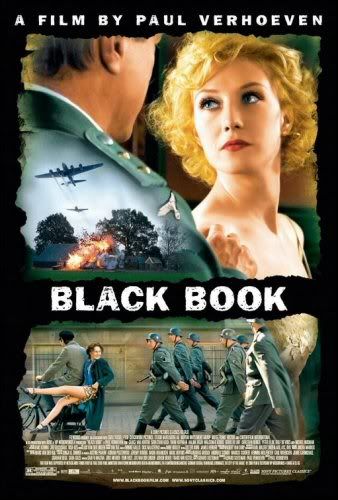
Now, I love World War II. I own a collection of books on the subject. Schindler’s List is the best movie that ever has been — and probably ever will be — made. Reich 5 is one of my favourite of the Infinite Worlds. So when even I am so fucking sick of this shit that we put off watching this movie for like a month and a half, you know it’s bad. Josh only picked this one up because MovieBob recommended it in some review or other, which made me even more skeptical, as he and I seem to either really agree or really disagree on most movies. But we’d put it off long enough and we needed to watch it for Netflix to send us anything else, so we finally bit the bullet and now, here we are.
The movie opens in ’50s Israel, where we meet two women – Ronnie Nolastnamegiven, a tourist, and Rachel Stein, a schoolteacher. They happened to be friends from Holland who haven’t seen each other since the war. After doing some catching up, Rachel, played by the very lovely Carice van Houten, goes off to contemplate how they met and how she ended up in Israel, and the movie starts for real this time. It’s nearly the end of the war, but that hardly makes things better for Rachel, who’s hiding place was just blown up and is now trying to flee the country. Needless to say, shit goes pear-shaped and after everyone she ever knew or loved is murdered by Nazis she joins the Resistance. If you’re starting to think she’d make a good JRPG protagonist, you’re not alone.
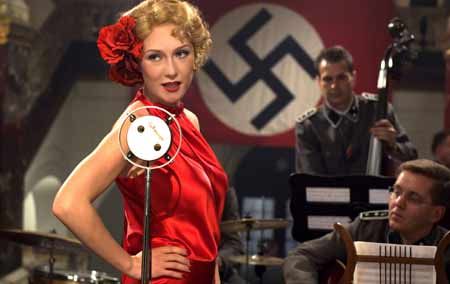
From there on out, it’s pretty much your standard World War II spy movie. Stein is a woman, so obviously she can’t fight, and instead seduces a Nazi officer, but of course she falls in love with him, and someone is selling their group out but they don’t know who, blah blah blah… There are more twists than you can count on one hand and only one is at all surprising, but even that takes forever to get to and forever to resolve. Having the movie go on for so long after the war ended was a mistake. At one point of hilarious self-awareness, van Houten sobs “Will it never stop?!” I was wondering that myself.
Given the pretty unoriginal premise, the film relies almost completely on the actors’ performances, which are admittedly great pretty much across the board. One scene with Theo, played by Johnny de Mol, was absolutely ridiculous and just made me laugh, but I don’t know if that was the actor or the retarded dialogue he was being made to spew forth. All of the characters except Stein, Müntze and Akkermans are pretty much impossible to feel any sort of empathy for because they’re vehicles for World War II drama archetypes, not actual people, and even those main three aren’t too interesting.
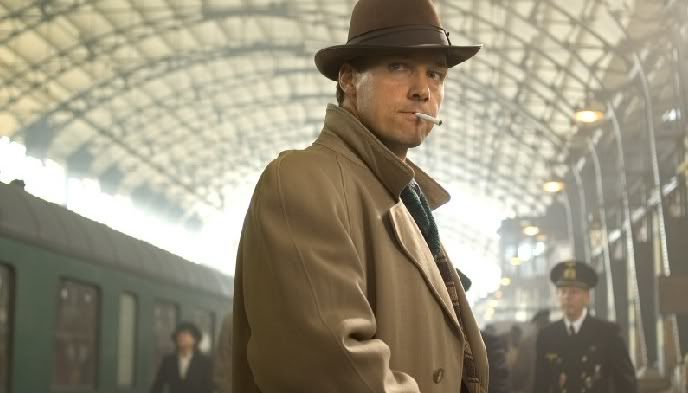
So, should you put Black Book on your Netflix queue? If you’re looking for a solid period drama, Schindler’s List is better. If you just want to see Nazis getting killed, you’ll be sorely disappointed, and should just queue up Inglorious Basterds and its loose interpretation of historical accuracy. If you want to see Carice van Houten whip her tits out with alarming frequency, you could do a lot worse than Black Book. But really, just do a Google search for screenshots. There are plenty, trust me. … Ahem.
Josh Loomis can’t always make it to the local megaplex, and thus must turn to alternative forms of cinematic entertainment. There might not be overpriced soda pop & over-buttered popcorn, and it’s unclear if this week’s film came in the mail or was delivered via the dark & mysterious tubes of the Internet. Only one thing is certain… IT CAME FROM NETFLIX.

